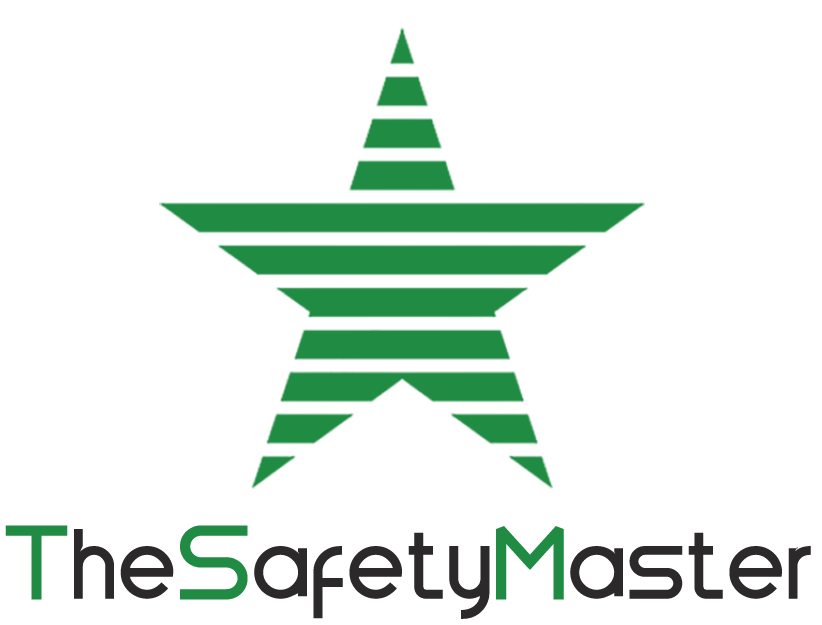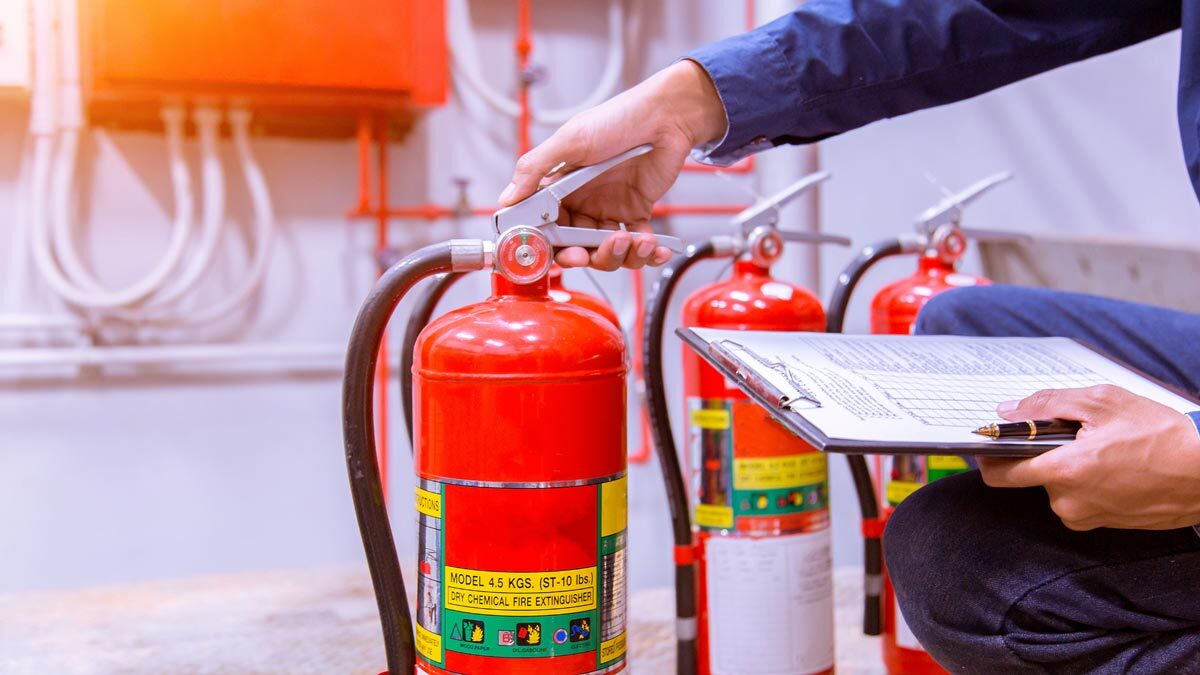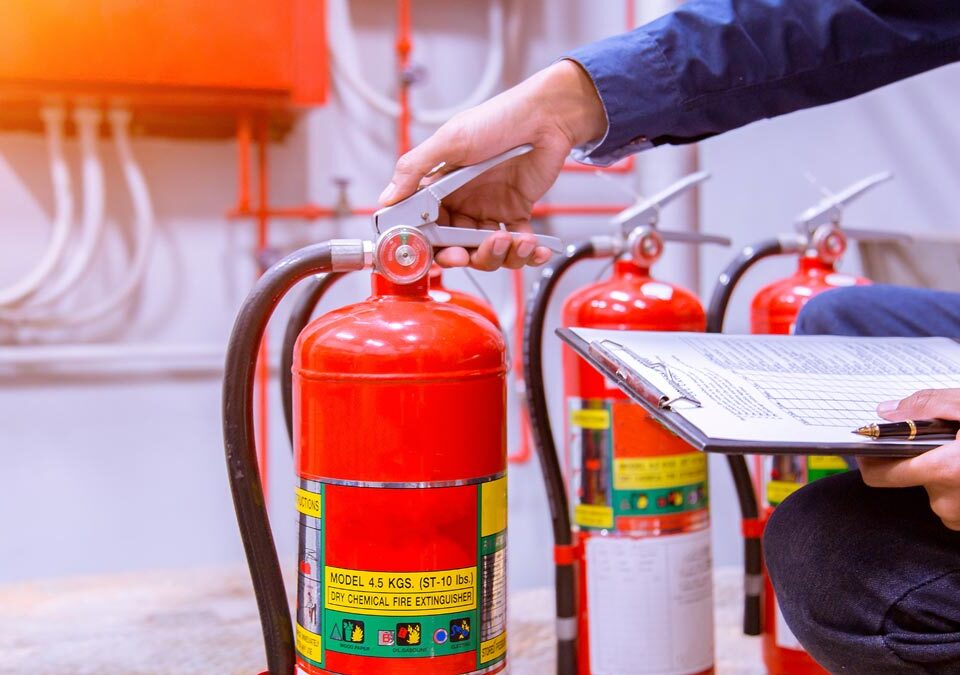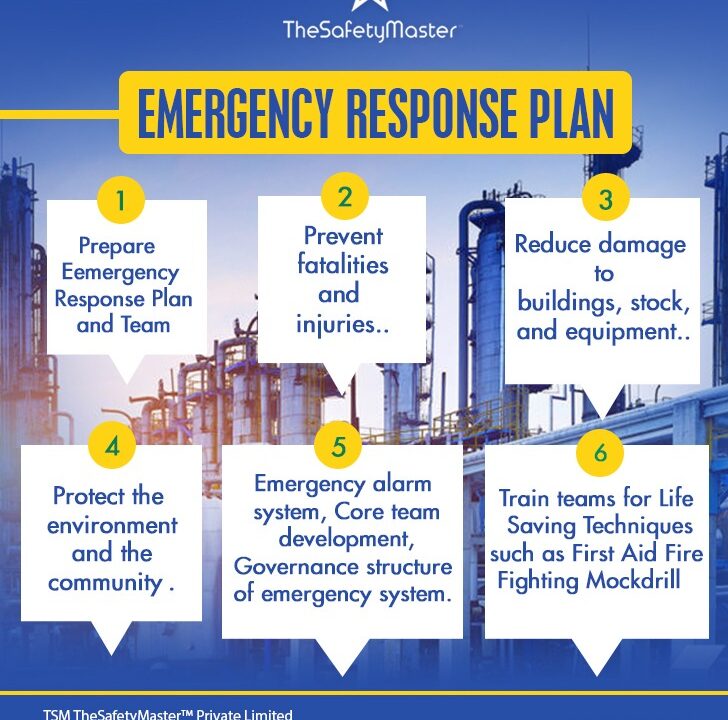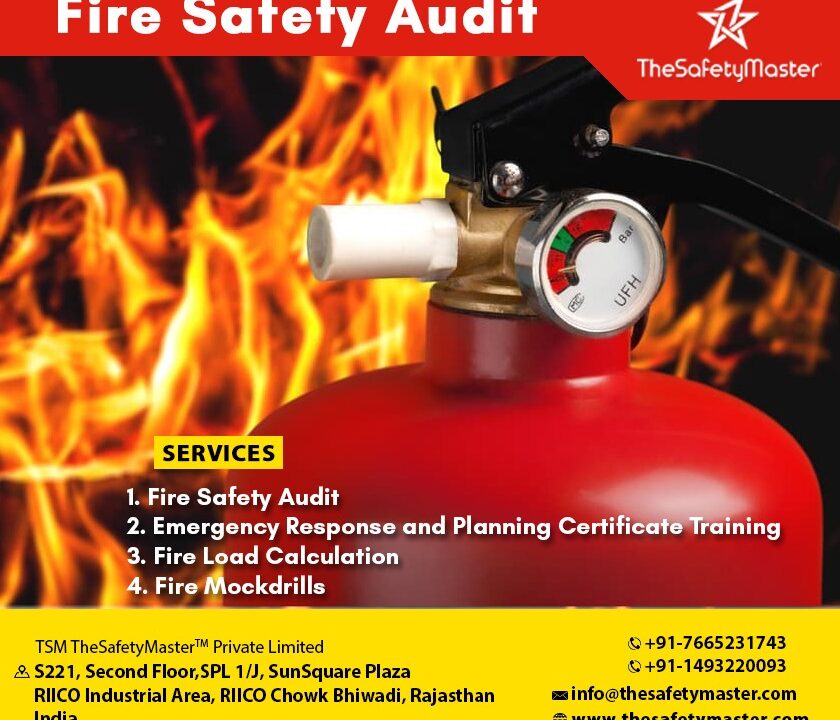Fire Safety Audit – The Complete Guide for Indian Businesses

Top 10 Essential Electrical Safety Rules and Tips for the Workplace
October 24, 2025
EHS Audit & Report: The Importance of Regular Audits for a Safe and Compliant Workplace
October 24, 2025A fire safety audit is a systematic evaluation of a building’s fire prevention systems, safety measures, and emergency response preparedness. For industries, offices, and residential complexes, this audit is not just a compliance requirement—it’s a proactive step toward saving lives, protecting assets, and maintaining operational continuity.
In India, where workplaces are often dense and diverse, the risk of fire incidents remains high due to electrical faults, combustible materials, or inadequate safety measures. Conducting a periodic fire safety audit helps identify these risks, ensures adherence to the National Building Code (NBC) of India, and verifies the effectiveness of fire-fighting equipment and evacuation plans.
For businesses aiming to maintain a safe environment, regular audits by certified professionals like Safety Master India ensure not only compliance but also peace of mind—knowing your workplace is truly fire-ready.
What is a Fire Audit and Why It Matters
A fire audit is a structured and detailed inspection of a building’s fire safety systems, emergency preparedness, and compliance with statutory safety standards. In simple terms, it’s a health check for your property’s ability to prevent, detect, and respond to fire emergencies effectively.
During a fire audit, certified professionals assess key safety elements—like fire alarms, extinguishers, hydrant systems, evacuation routes, and staff training—to ensure everything functions as intended. The goal is to identify fire hazards, operational lapses, or non-compliance with safety norms before they turn into life-threatening incidents.
In India, fire audits are guided by the National Building Code (NBC) of India, Factories Act, 1948, and various State Fire Safety Rules. These regulations mandate periodic inspections to confirm that all fire prevention and control measures are in place. For commercial buildings, hospitals, malls, and industrial setups, maintaining a valid fire audit report is not optional—it’s a legal and moral responsibility.
By conducting regular fire audits, organizations not only meet compliance standards but also create a culture of safety and accountability across every level of operation.
Key Components of a Fire Safety Audit
A fire safety audit goes beyond just checking equipment—it’s a comprehensive evaluation of how prepared your facility is to handle a fire emergency. Each component of the fire and safety audit checklist plays a vital role in ensuring that prevention, protection, and response systems are functioning effectively.
Here are the major elements covered during a professional audit:
1. Inspection of Fire Detection and Alarm Systems
Auditors verify whether smoke detectors, fire alarms, and control panels are properly installed, functional, and regularly tested. The sensitivity of alarm systems and their integration with suppression systems are also checked to ensure early detection and timely alerts.
2. Fire Extinguishers, Hydrants, and Suppression Systems
Every extinguisher’s placement, type, and expiry date are reviewed. Hydrant systems, sprinklers, and other suppression setups are tested for pressure, coverage, and reliability. These systems form the first line of defense against spreading fire.
3. Emergency Exits, Signage, and Evacuation Routes
Auditors assess whether exit routes are clearly marked, well-lit, and free of obstructions. Emergency lighting and glow signage are checked for visibility during low-light conditions, ensuring smooth evacuation during an emergency.
4. Staff Training and Mock Drills
Even the best systems fail without trained personnel. The audit evaluates whether employees know how to respond in case of a fire—checking for awareness programs, fire warden appointments, and regular evacuation drills.
Each component in the fire and safety audit checklist contributes to creating a safer environment that minimizes risk, saves lives, and ensures compliance with national fire safety standards.
Step-by-Step Fire Safety Audit Process
Conducting a fire safety audit requires a systematic and professional approach to ensure every aspect of fire prevention and response is covered. The process follows a well-defined structure, resulting in a detailed fire audit report that highlights findings, risks, and recommendations.
Here’s how the audit typically unfolds:
1. Pre-Audit Planning
This initial phase involves understanding the building layout, operations, and existing fire safety systems. Auditors gather basic details such as occupancy type, installed equipment, and previous audit records to tailor the inspection scope effectively.
2. Site Inspection and Hazard Assessment
Experts physically inspect the premises to identify fire hazards—like faulty wiring, blocked exits, or improper storage of flammable materials. They also evaluate fire detection, alarm, and suppression systems to ensure they’re in working condition.
3. Review of Documentation and Training Records
A thorough review of maintenance logs, safety manuals, and staff training records helps auditors verify whether safety procedures are consistently followed. This step ensures that preventive measures are not just installed but actively maintained.
4. Testing of Fire Protection Equipment
Each fire protection system—from sprinklers to hydrants—is tested for functionality and response time. Fire extinguishers are checked for accessibility, pressure levels, and appropriate classification based on the type of risk.
5. Final Fire Audit Report Preparation and Recommendations
Once the inspection and testing are complete, auditors compile their findings into a comprehensive fire audit report. This report outlines compliance status, risk levels, and corrective actions needed to enhance safety standards. It serves as both a record of compliance and a roadmap for continuous improvement.
A well-conducted fire safety audit doesn’t just tick boxes—it empowers organizations to build a stronger safety culture and reduce potential losses due to fire incidents.
Fire Safety Audit Checklist
A well-structured fire safety audit checklist ensures that every critical aspect of fire prevention and protection is properly reviewed during the audit. It helps auditors and safety managers confirm compliance with legal standards while maintaining a safe working environment.
Below is a sample checklist commonly used in industrial, commercial, and residential fire audits:
| Inspection Area | Audit Checkpoints | Status/Remarks |
|---|---|---|
| Fire Extinguishers & Hydrants | Check placement, accessibility, pressure, and expiry date of extinguishers; inspect hydrant valves and pressure levels. | ☐ Compliant ☐ Needs Action |
| Smoke Detectors & Alarm Systems | Verify that smoke detectors are installed in all key areas and alarm systems are functional and audible. | ☐ Compliant ☐ Needs Action |
| Emergency Exits & Evacuation Routes | Ensure exits are clearly marked, illuminated, and free from obstructions; test emergency lighting. | ☐ Compliant ☐ Needs Action |
| Fire Drills & Staff Training | Confirm regular fire drills are conducted and employees are trained to respond quickly during emergencies. | ☐ Compliant ☐ Needs Action |
| Fire Safety Signage & Instructions | Check if fire safety signs, assembly points, and instructions are visible and up to date. | ☐ Compliant ☐ Needs Action |
A detailed fire safety audit checklist like this helps organizations systematically review their fire protection readiness and take corrective action before an incident occurs. It also ensures transparency and traceability in fire safety management.
Reporting and Compliance
After the inspection phase, the most critical part of a fire safety audit is reporting and compliance. This stage converts on-ground findings into actionable insights and ensures that the organization aligns with all fire safety standards and legal obligations.
1. What a Fire Audit Report Should Include
A comprehensive fire audit report summarizes all observations, risk levels, and recommendations made during the audit. It typically includes:
- Overview of the premises and inspection details
- Summary of the existing fire safety systems
- Identified hazards and compliance gaps
- Visual documentation (photos, diagrams)
- Recommendations with timelines for corrective actions
- Compliance status as per the National Building Code (NBC) and local fire department regulations
This report serves as both an internal record and an external compliance document that may be requested by authorities or insurers.
2. Scoring or Grading of Compliance
To simplify assessment, auditors often assign a compliance score or grade—for example, “Excellent,” “Satisfactory,” or “Needs Improvement.” This rating reflects the organization’s overall preparedness and helps prioritize corrective measures. A quantified score also makes it easier to track progress in future audits.
3. Common Non-Compliance Issues and How to Fix Them
Typical issues found during audits include:
- Expired or improperly placed fire extinguishers
- Blocked emergency exits or missing signage
- Inoperative smoke detectors or alarms
- Lack of fire drills or staff training
- Poor maintenance of electrical systems
How to fix them:
- Implement a periodic maintenance schedule for all equipment
- Conduct quarterly fire drills and refresher training
- Update fire safety signage and evacuation maps
- Engage professional services like Safety Master India for system inspections and documentation support
4. Frequency of Re-Audits and Legal Documentation
Fire safety audits should be conducted at least once a year, though high-risk industries (like manufacturing or healthcare) may require more frequent evaluations.
After each audit, the updated report and compliance certificates should be filed and displayed as per state fire department norms. Maintaining these records ensures legal compliance and readiness during inspections or emergencies.
Why Hire Safety Master India for Fire Safety Audits
Choosing the right partner for a fire safety audit can make all the difference between basic compliance and complete protection. Safety Master India stands out as one of the most trusted names in the industry, known for its technical expertise, precision, and commitment to safety excellence.
1. Expertise in Industrial, Commercial, and Institutional Audits
From manufacturing plants and warehouses to offices, malls, and educational institutions — Safety Master India brings extensive experience across multiple sectors. Each audit is customized to the unique fire risks and operational layout of the facility, ensuring a thorough and relevant evaluation.
2. Compliance with NBC and IS Standards
All audits are conducted in alignment with the National Building Code (NBC) of India, IS 14489, and other applicable safety standards. This guarantees that your facility meets both statutory and insurance compliance requirements, reducing the risk of legal or operational penalties.
3. Detailed Audit Reporting with Corrective Action Plans
The team provides a comprehensive fire audit report that not only identifies potential hazards but also outlines actionable recommendations. Each report includes practical steps, timelines, and compliance grades, helping organizations implement improvements efficiently.
4. Nationwide Coverage and Certified Auditors
With a network of certified fire auditors across India, Safety Master India ensures prompt service delivery and consistent quality, regardless of your location. Every auditor is trained in the latest fire safety technologies and regulatory updates.
Whether you’re looking to strengthen workplace safety, meet compliance norms, or protect lives and assets, Safety Master India offers end-to-end audit solutions tailored to your needs.
